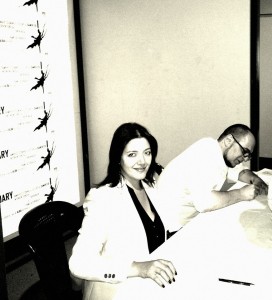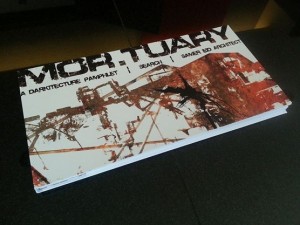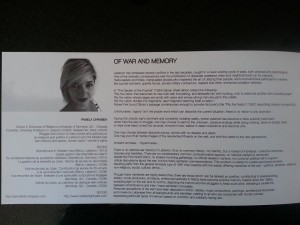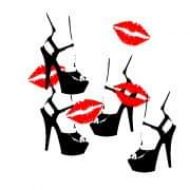Lebanon has witnessed several conflicts in the last decades, caught in a never-ending cycle of wars, both physical and psychological. One of the dramatic consequences was the proliferation of disparate scattered cities and neighborhoods run by warlords, mafia leaders and tribes, manipulated proxies who mastered the art of utilizing their people, and unconventional participants in warfare like suicide-bombers, guerrilla forces, private military contractors, reapers and other unmanned predator vehicles.
In ‘The Garden of the Prophet’ (1934), Gibran Khalil Gibran stated the following: “Pity the nation that welcomes its new ruler with trumpeting, and farewells him with hooting, only to welcome another with trumpeting again. Pity the nation whose sages are dumb with years and whose strong men are yet in the cradle. Pity the nation divided into fragments, each fragment deeming itself a nation”. Robert Fisk found this passage of Gibran contemporary enough to provide the title of his book, ‘Pity the Nation’ (1991), characterizing Lebanon as ‘agonizing’… Unfortunately, ‘agony’ isn’t the proper word which can describe the current situation: there is no nation to pity anymore!
Facing this chaotic war dominant and constantly mutating reality, where violence has become a mere publicity instrument rather than the axis of struggle, one may choose to wait for the unknown, observe endings while doing nothing, leave for foreign oasis, or wipe inner tears turned into wounds, immure in loss, wallow in dead civilizations and become one.
One may choose between absolute sorrow, sorrow with no despite and death.
One may put off all mental images of the resurrected Phoenix on the wall, and shift the battle to the next generations.
Ambient amnesia… And hypermnesia …
There is no national war memory in Lebanon, thus no common history, nor identity, but a myriad of individual/collective memories, histories and identities. There are no contemporary common commemorative spaces, no national martyrs to remember beside the First World War’s, no shared mourning gatherings, no official research centers, nor common political will to support critical discussions about the war, but too many sectarian commemorations. This problem is related to a state sponsored amnesia resulting partly from the general Amnesty Law of 1991 that coexists with the widely differing narratives of the war – political, sectarian, religious, non-religious, social, cultural, ethnic,…
Though many narratives are highly destructive, there are those which can be labeled as positive, contributing to peacebuilding. Artists, movie producers, architects, writers and activists in NGOs have become positive memory makers since the 1990s, shedding light on the war and its victims, depicting the horrors and the struggles to keep souls alive, stressing a causal link between remembrance and inter/trans-sectarian conviviality. Personal perceptions of the war have been depicted in fiction, diaries, music productions, paintings, architectural structures and novels by Lebanese from all backgrounds and identities, relating to all who are concerned with human survival, expressing particular types of memory based on contrition and solidarity facing war.
Most of these memory makers are more concerned with rethinking the past in order to build a better future than reducing their present to a quest of survival and thus shrinking the self to its minimal dimensions – living and operating self-criticism appears to be more important than being trapped in the victim state of mind. They create alternative localities (‘lieux alternatifs’) for a diversity of voices-paths to be communicated, expressed, debated and shared, thus promoting a unified yet pluralistic and mediated society. These localities reveal that social and political spaces are never structured neutrally like a ‘tabula rasa’, but instead consist of individual and collective discourses and practices, visions and interpretations of discursive forces.
Memory makers choose not to forget the past and grant blanket amnesties to the perpetrators of massive crimes. They choose to publicly expose the truth – their truths -, and bring solace to victims, such as in South Africa, Bosnia and Rwanda, where public acknowledgement of victims was considered to be the beginning of the healing process and a form of restorative versus punitive justice. They choose to erase urban borders, breach the divide among Lebanese whose memories linger in the betwixt space of sectarian/political violence, communal loyalty and the desire for a unified nation, and to transcend the contrast between public ruins such as the bullet-ridden Holiday Inn and the restored soulless downtown of Beirut.
Memory makers show that war victims are not only harmed physically (first death). The act of violence transmits an unambiguous message – that their views do not count and their voices will not be heard (second death). Therefore, their rebirth, their ascent from hell, becomes a must, at least through the rehabilitation of their forgotten voices and memories.
According to philosopher Paul Ricoeur in ‘The Memory of Suffering’ (1995), ‘we must remember because remembering is a moral duty. We owe a debt to the victims. And the tiniest way of paying our debt is to tell and retell what happened to them. We have learned from the Greek story-tellers and historians that the admirable deeds of the heroes needed to be remembered and thus called for narration. We learn from Jewish story-teller like Elie Wiesel that the horrible – the inverted image of the admirable – needs to be rescued still more from forgetfulness by the means of memory and narration’. In other words, the marginalized voices speak to the public ear, breaking the pyramid of hierarchy both in the living world and in the afterlife. The unspeakable and unthinkable are communicated and translated. The personal stories brought from the innermost of the individuals bind us anew to the collective.
War affected – and still is affecting – all Lebanese psychologically as individuals and in social/political relationships. It shaped – shapes – their beliefs and patterns of behavior. This contributes to the propensity to participate in the next wave of strife or pass it on to the next generation thereby fueling cycles of violence. Every Lebanese plays some role in this cycle, therefore bears responsibility in it.
The role and influence of events and beliefs from current and previous generations that perpetuate cycles and receptivity to hate is obvious to some, preposterous to others. Such thinking evolved early on in the field of psychology, as explained by Carl Jung in ‘Memories, Dreams, Reflections’ (1963): ‘I feel very strongly that I am under the influence of things or questions which were left incomplete and unanswered by my parents and grandparents and more distant ancestors . It often seems as if there was an impersonal karma within a family, which is passed on from parents to children. It has always seemed to me that I had to answer questions which fate had posed to my forefathers, and which had not yet been answered, or as if I had to complete, or perhaps continue, things which previous ages had left unfinished. It is difficult to determine whether these questions are more of a personal or more of a general (collective) nature. It seems to me that the latter is the case. A collective problem, if not recognized as such, always appears as a personal problem, and in individual cases may give the impression that something is out of order in the realm of the personal psyche. The personal sphere is indeed disturbed, but such disturbances need not be primary; they may well be secondary, the consequence of an insupportable change in the social atmosphere. The cause of disturbance is, therefore, not to be sought in the personal surroundings, but rather in the collective situation’.
There is indeed a role for ancestors and their deeds in the present lives of their descendants. In many cultures, ancestors are seen as available to guide, teach, and to nurture. They represent one of the pathways between the knowledge of this world and the next. Unless the relationship between the living and the dead is in balance, chaos results; and if the imbalance exists, the living individuals have the duty to heal their ancestors, to resolve ‘sick energies’.
According to psychotherapist and initiator of the Garden of Forgiveness in central Beirut, Alexandra Asseily, Lebanese have to become good ancestors, stop being ‘the prisoners and the puppets of the stinging memories of strife’, clean up ‘ancestral arteries so that children are free to act in the now, free from the blocks with echo from the past’, let history inform them, not control them (in ‘Breaking the Cycle of Violence in Lebanon- and Beyond’, 2007). Therefore, they must undergo a process that falls into three steps: take responsibility for the active or passive role they play in propagating war; create a space of self-reflection sot that they can become aware of nocuous behaviors and beliefs that reinforce that role; release the source of grievances they hold on to, so that they can be free to replace old habits and think with new life-affirming ones thereby creating positive cycles around them and their children.
MOR.TUARY incarnates this quest to the past and its abysses, linking it to the present and future, a channel between the visible and the invisible, humanity and a transcendental power conducive to reconciliation. It offers a creative new momentum of transformation and healing, and reminds us all that horrors should never be forgotten in order not to occur again. They should not be forgotten so Lebanese will be able to address their cycles of fear, anger and guilt, to build effective bulwark against future human rights’ violations, and to recover the soul of their nation.
[hr]

This article was published in Samer Eid’s Architecture Pamphlet MOR-TUARY, Beirut, Color Balance, 2013.

Forewords by Dr. Pamela Chrabieh and Architect Tarek Naga

in Samer Eid’s Architecture Pamphlet
Lebanon, 2013
